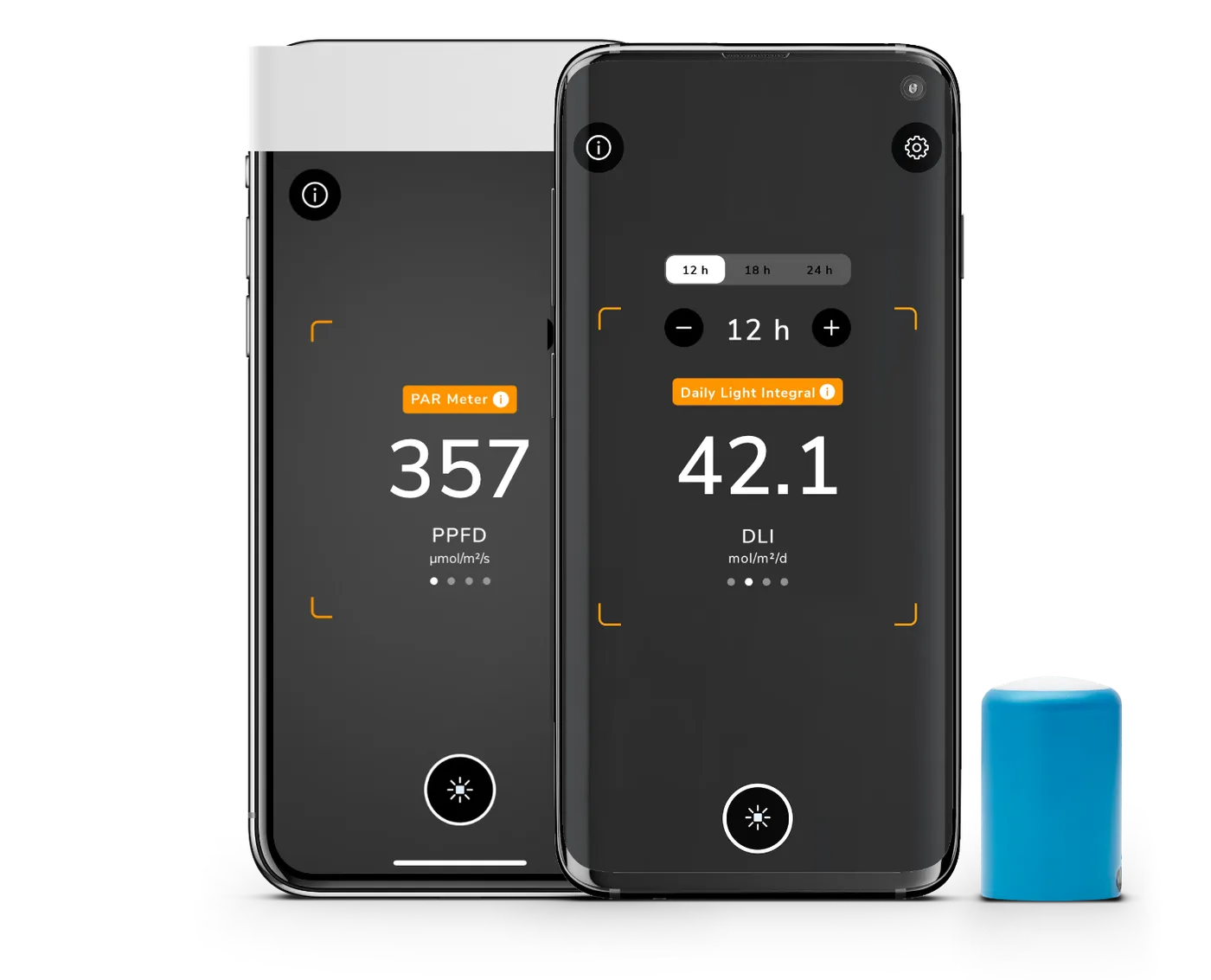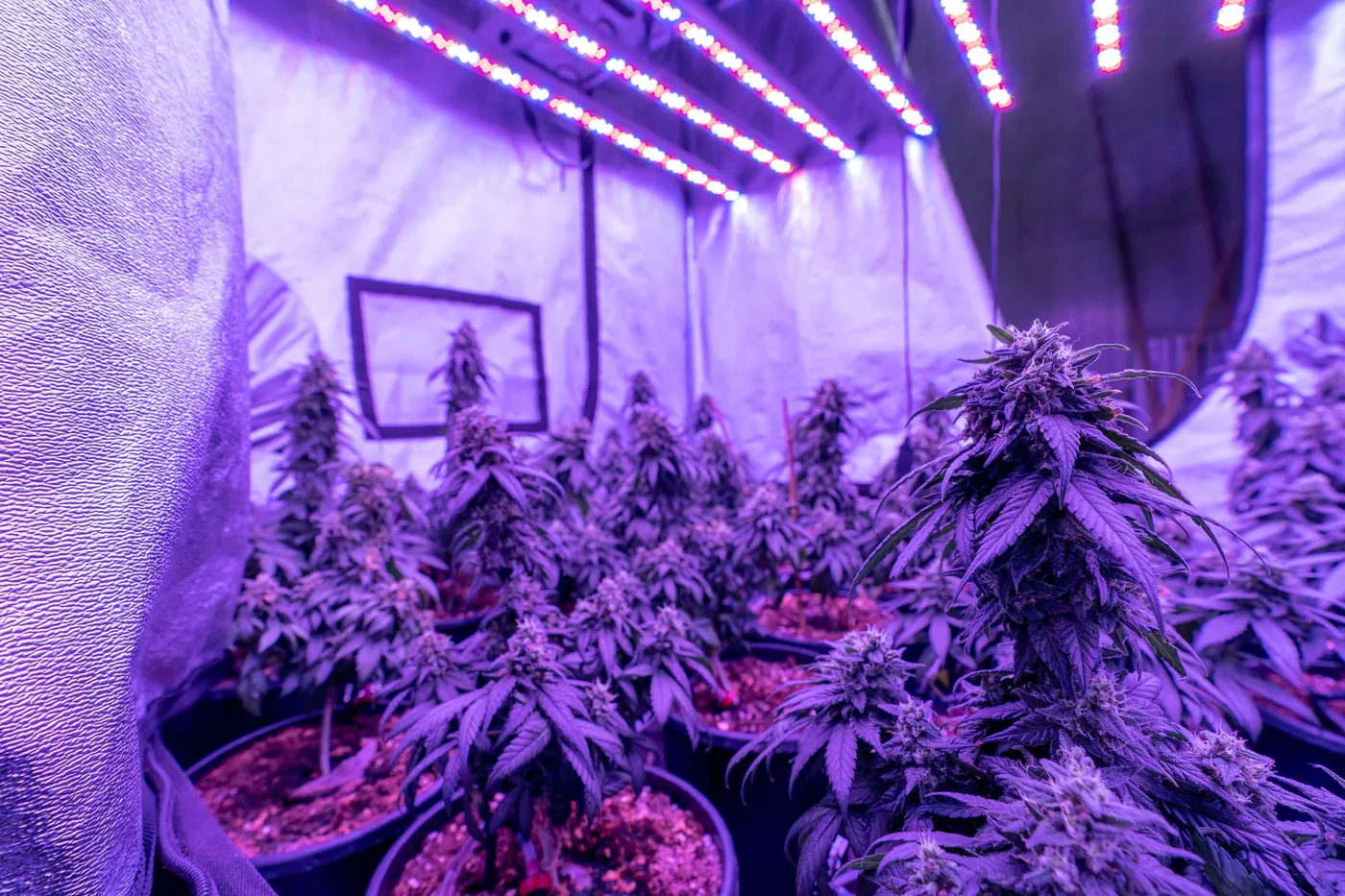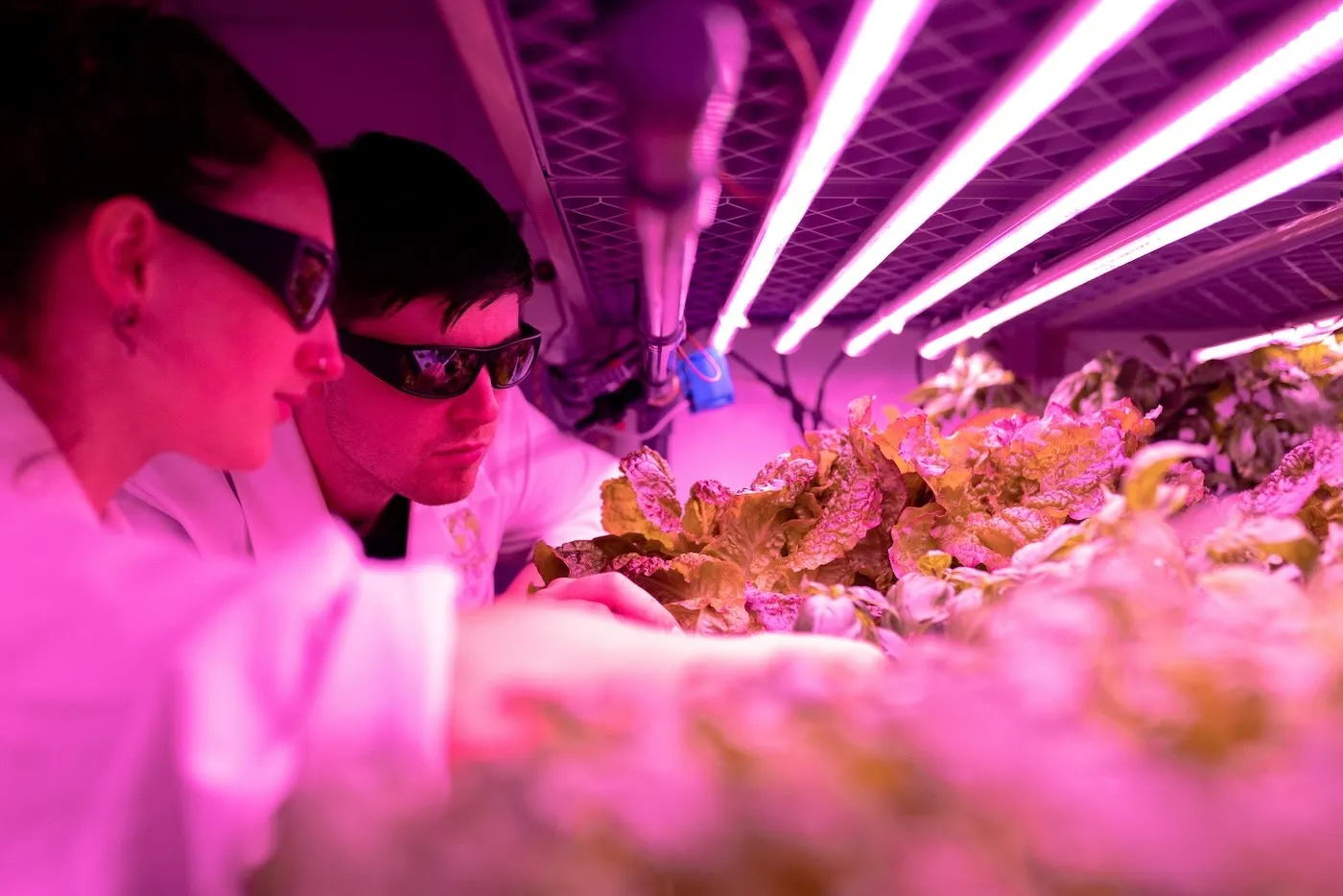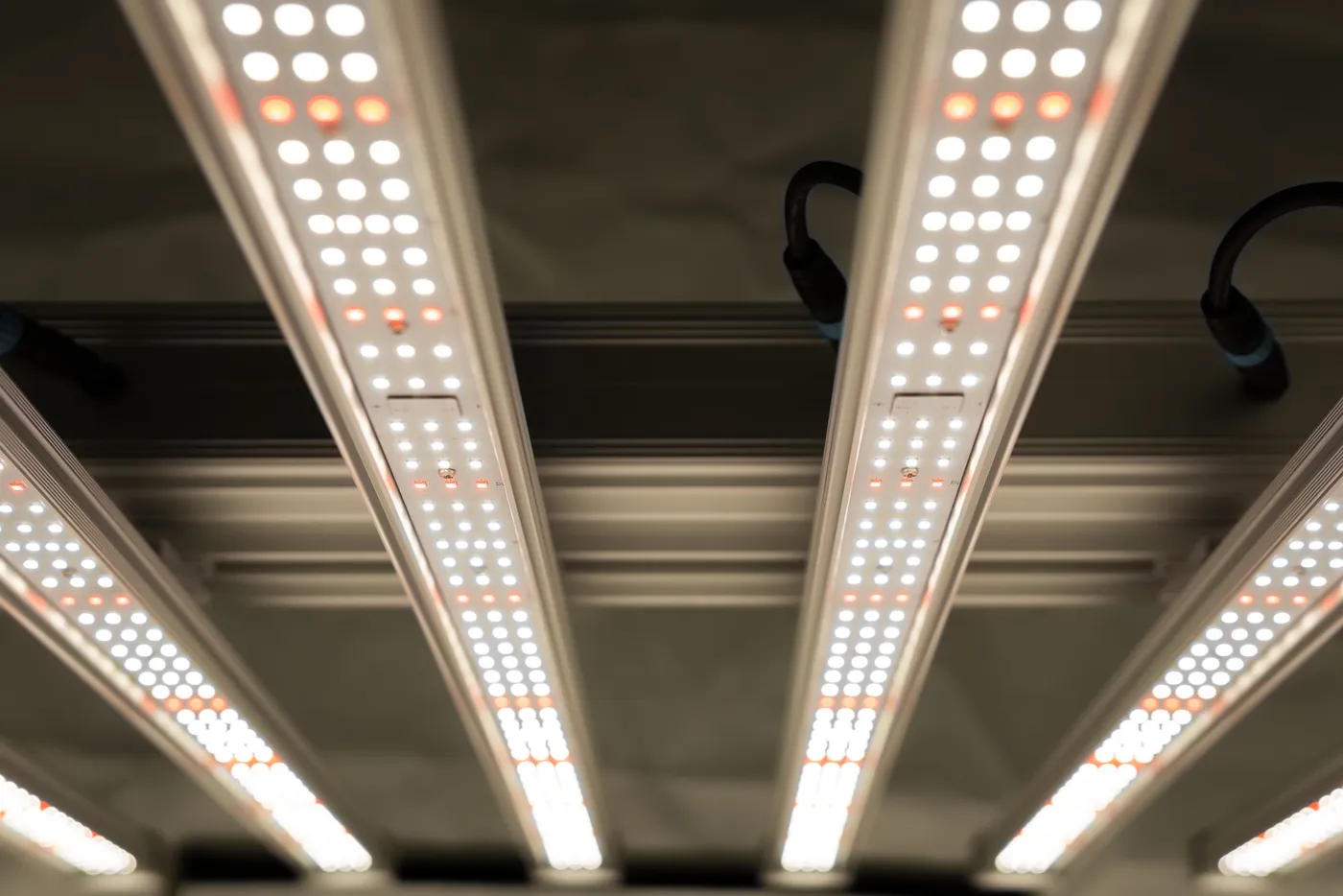
Auto-Translate
When talking about the efficacy and overall efficiency of grow lights over their lifespan, one metric is crucial: The grow light's light output depreciation.
Contents
What Exactly is Light Output Depreciation?
Light output depreciation results in a reduced number of lumens. Lumens are the total amount of visible light that is emitted by any light source. It is therefore also commonly called Lamp Lumen Depreciation (LLD) and is used to predict the depreciation in light output for a specific light source.
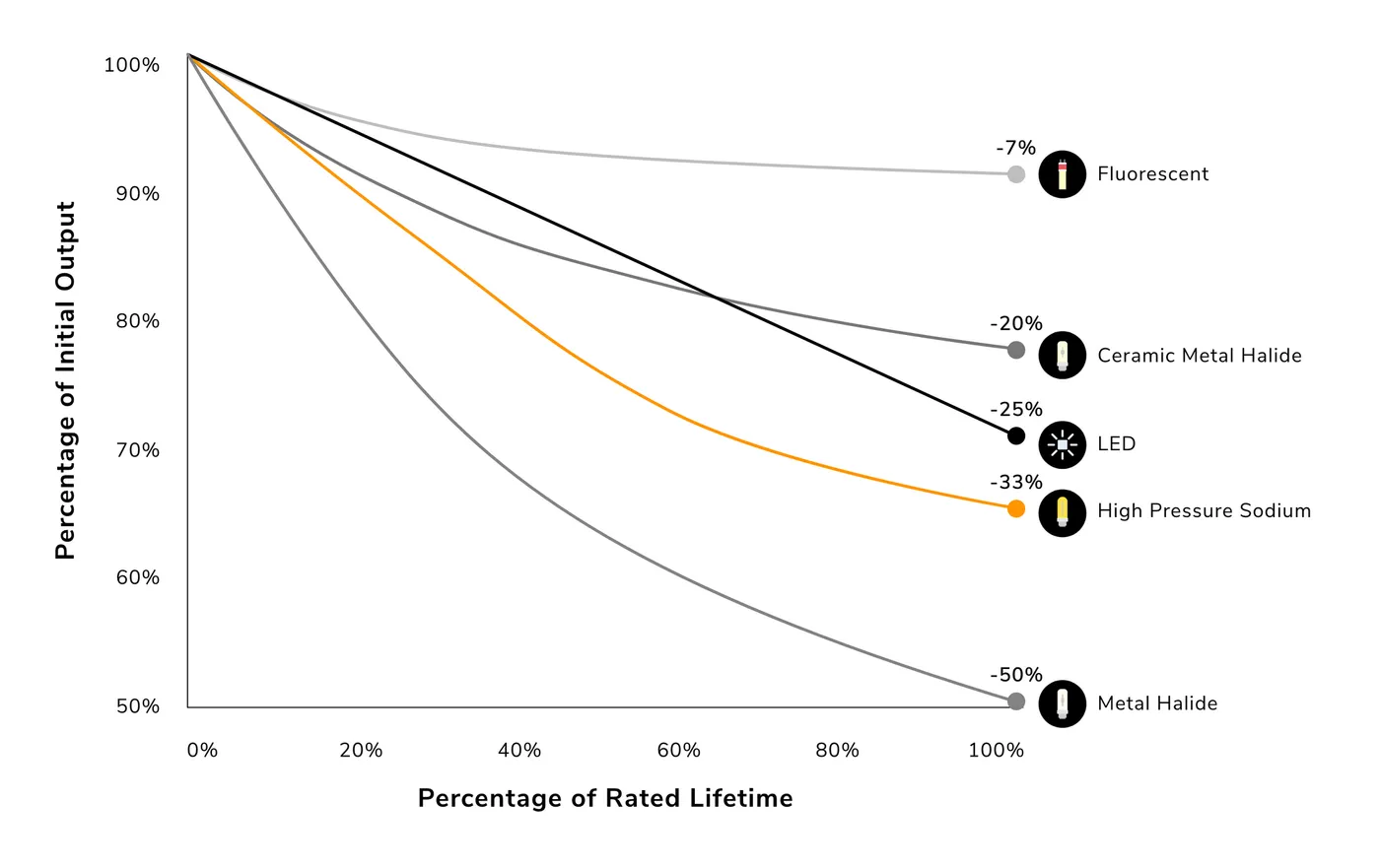
When you unbox a brand new grow light – be it a metal halide, high-pressure sodium, or ceramic metal halide bulb – you anticipate the bulb to emit its full potential of lumens. In other words, you expect the bulb to emit a bright light that drenches your beloved indoor crop with radiance to stimulate rapid growth.
Unless your grow light bulb is faulty from the get-go, it should produce its maximum range of lumen output. However, all grow lights have a lifespan in which the light output decreases over time.
Like all living things, indoor grow lights have a life expectancy. Rather than years, the lifespan of indoor grow lights is rated in hours. For example, when using HID lights, HPS bulbs are one of the longest-lasting bulbs, maintaining adequate light output for roughly 24,000-hours.
MH bulbs, on the other hand, have a lower lifespan, which is why they are rated upwards of 16,000-hours.
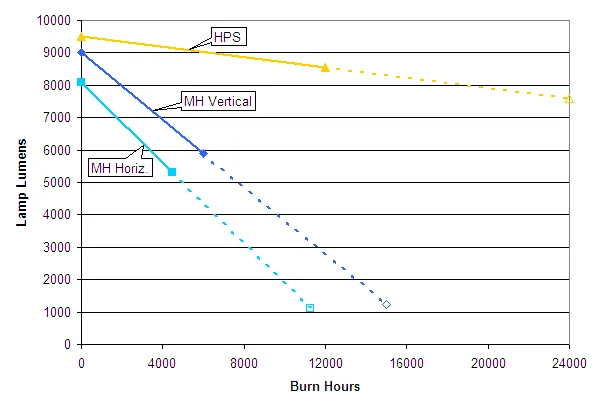
What Does Lower Light Output Mean For Your Plants and Overall Energy Bill?
When it comes to growing plants indoors, the underlying goal is to produce a bountiful harvest. To do so, you’ll need light - and a lot of it. However, if your lumen output is decreasing over time, then your overall efficiency rapidly decreases as well.
What does this mean for your indoor plants? It means less rapid growth and a reduced harvest. Growing plants indoors is an expensive hobby because of the elevated cost of electricity, nutrients, and water.
If your indoor grow lights are depreciating and emitting a reduced light output, then you’re paying more money for fewer lumens.
Light Output Depreciation For Common Grow Lights
As mentioned previously, HPS grow lights have a longer estimated lifespan when compared with MH grow lights. HPS grow lights are capable of nearly double the lifespan of MH grow lights.
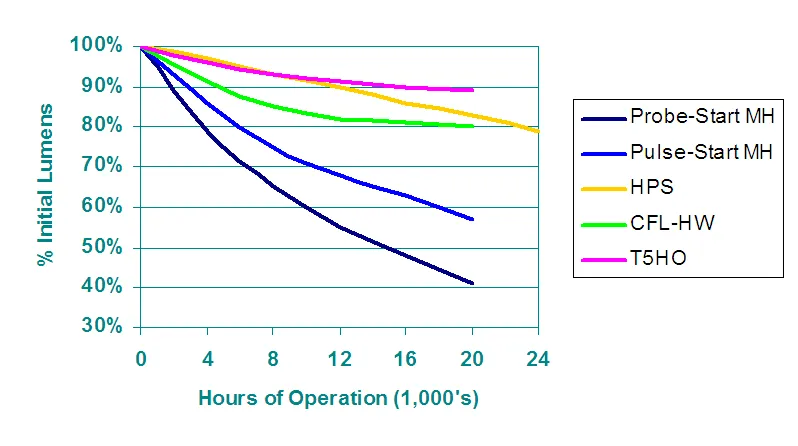
Furthermore, research shows that MH bulbs lose more lumen output compared to HPS bulbs. In some instances, MH grow lights lost nearly 80% of their light output by the end of their estimated lifespan. However, HPS bulbs lost only 20-35% of light output over the course of 24,000 operating hours.
Many factors come into play in light output depreciation for common grow lights. Factors, such as room temperature, humidity, vertical or horizontal placement, and the type of ballast (magnetic or digital) - all play a significant role in how quickly grow lights depreciate.
Other lights, such as LEDs and CFLs, have longer estimated life spans when compared with HID lighting. However, light output depreciation occurs by all means. Most LED lights have a rated lifespan of around 50,000 up to 100,000 hours.
Can The Human Eye Perceive The Light Output Depreciation of Grow Lights?
Although the human eye can perceive the intensity of light, it cannot measure lumens effectively. This is why it’s nearly impossible for any indoor grower to judge if a grow light is ready to be replaced.
How Can You Measure Your Indoor Grow Light?
If you want to ensure that your indoor plants are receiving the perfect amount of light while reducing your expenses, then you’ll need an effective measuring tool.
The vast majority of commercial light meters are expensive and non-intuitive. These archaic tools must be placed throughout the grow room to get an adequate reading. However, there is another choice that’s optimized for home or commercial indoor growers.
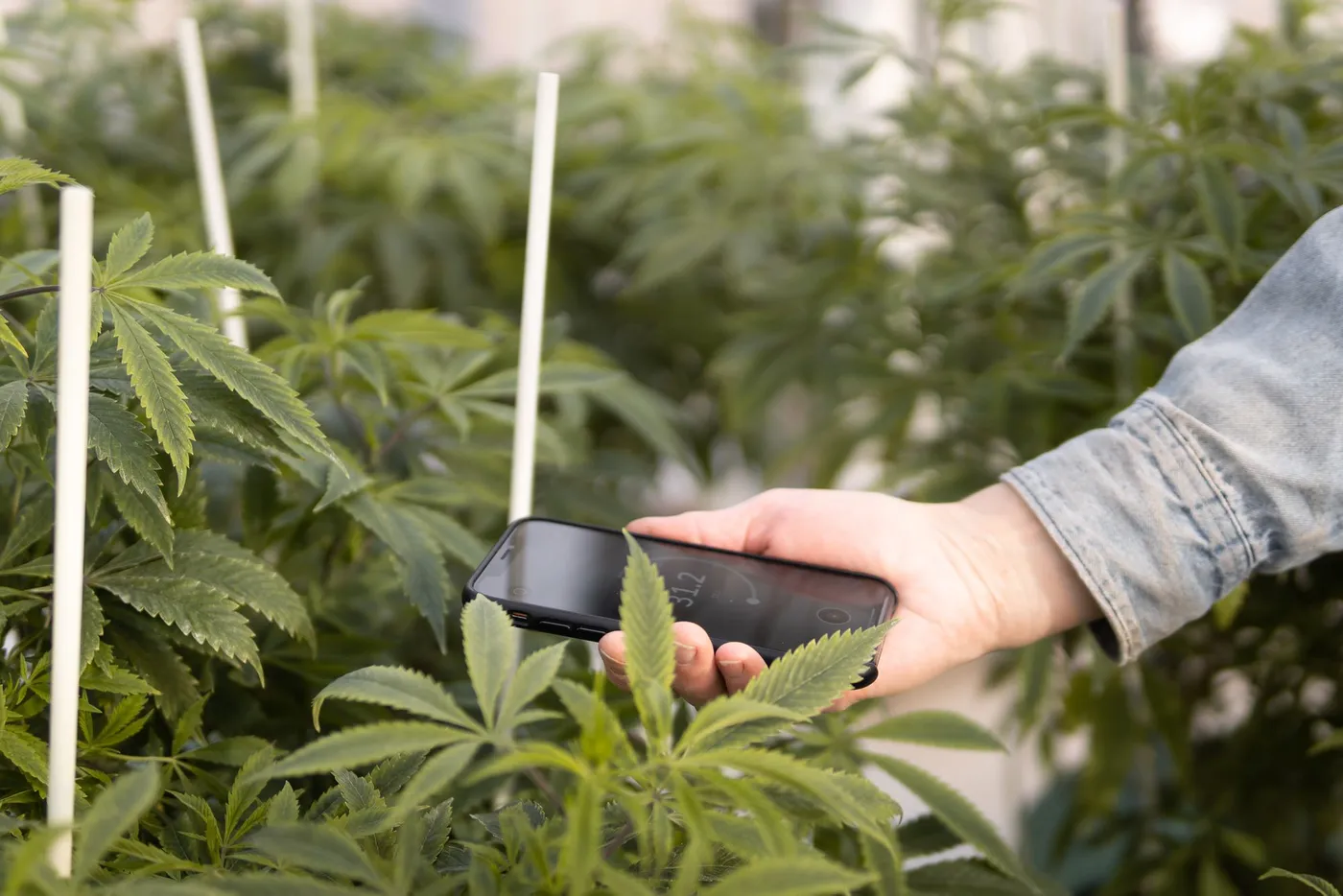
Our light meter app Photone empowers you with an all-in-one light meter in the palm of your hand. With our app, your smartphone is transformed into an efficient light meter that can perceive light output depreciation in real-time.
With this useful information, you can replace a grow light bulb once you notice that it’s not producing as much light output as it used to do. With our app at your disposal, you’ll never have to worry if your indoor grow lights are underperforming – meaning happy plants and a substantial yield for the energy you spend.

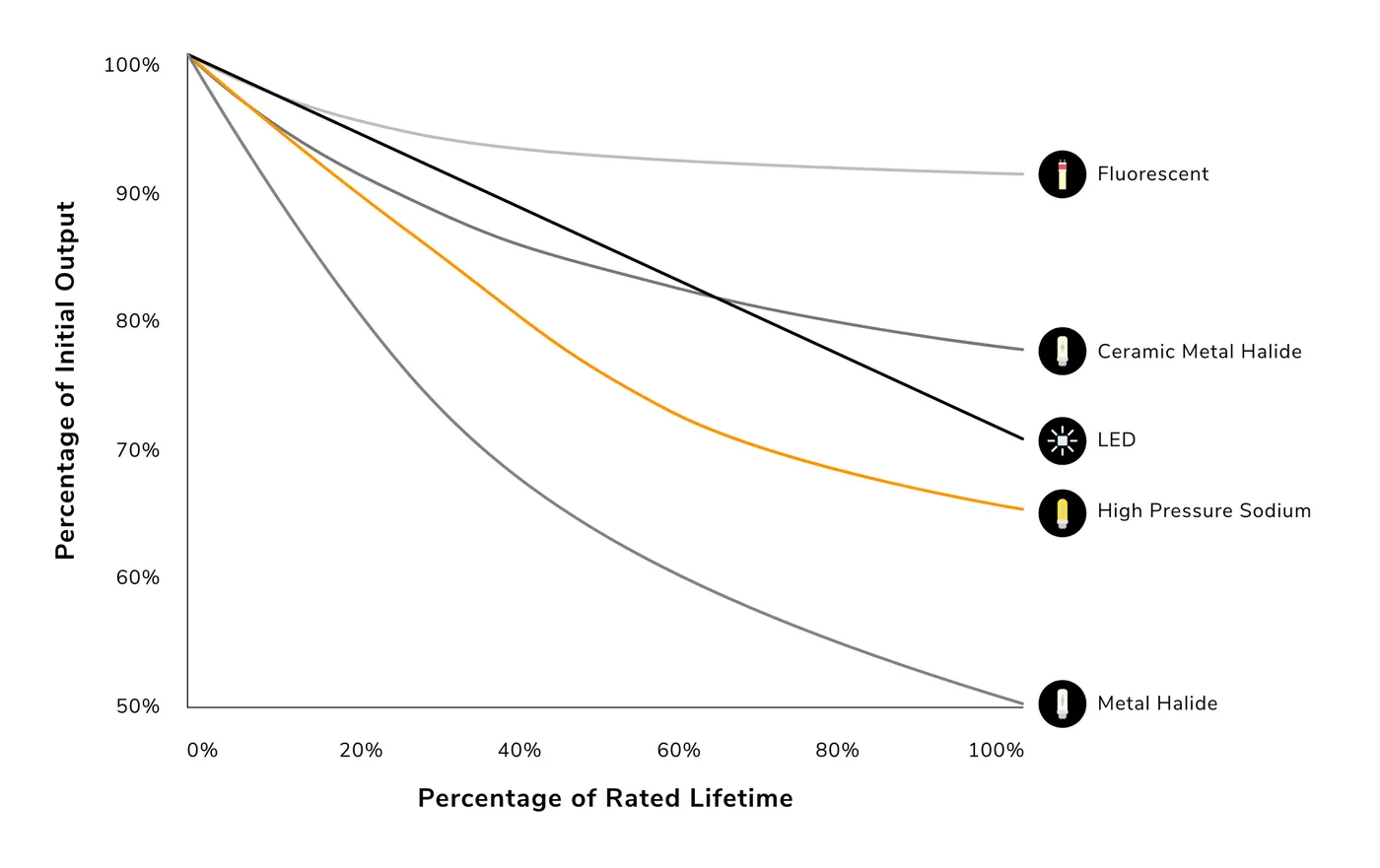
 Share This
Share This



